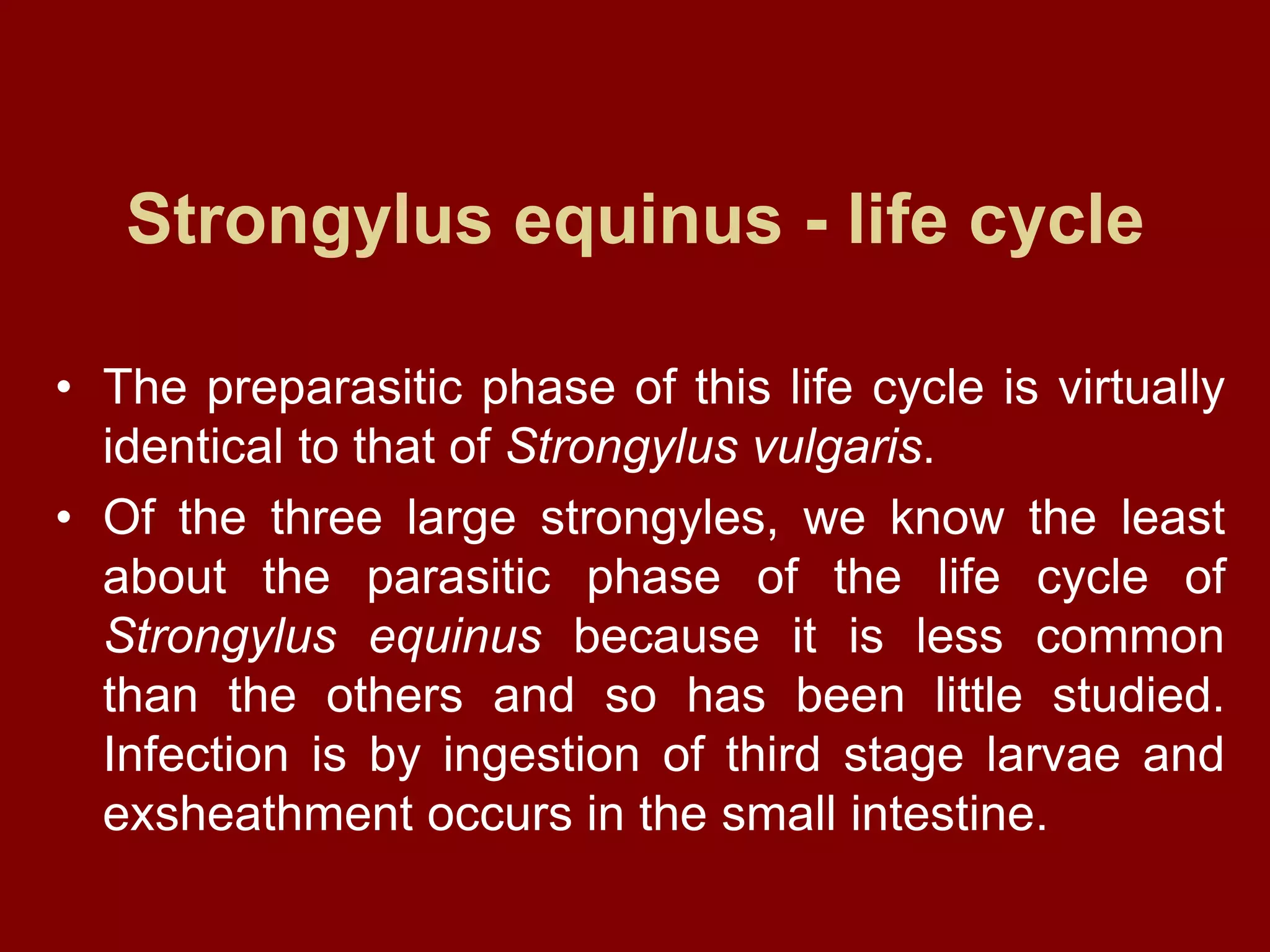This document discusses the Strongyloidea superfamily of parasitic nematodes, which includes several genera that infect the gastrointestinal and respiratory tracts of domestic mammals and birds. It focuses on the important strongyle genera that infect horses, including Strongylus, Triodontophorous, and cyathostomes in the large intestine, and Ancylostoma, Uncinaria, and Bunostomum in the small intestine. The life cycles and pathogenic effects of the large strongyle genera Strongylus vulgaris, S. edentatus, and S. equinus are described in detail.























